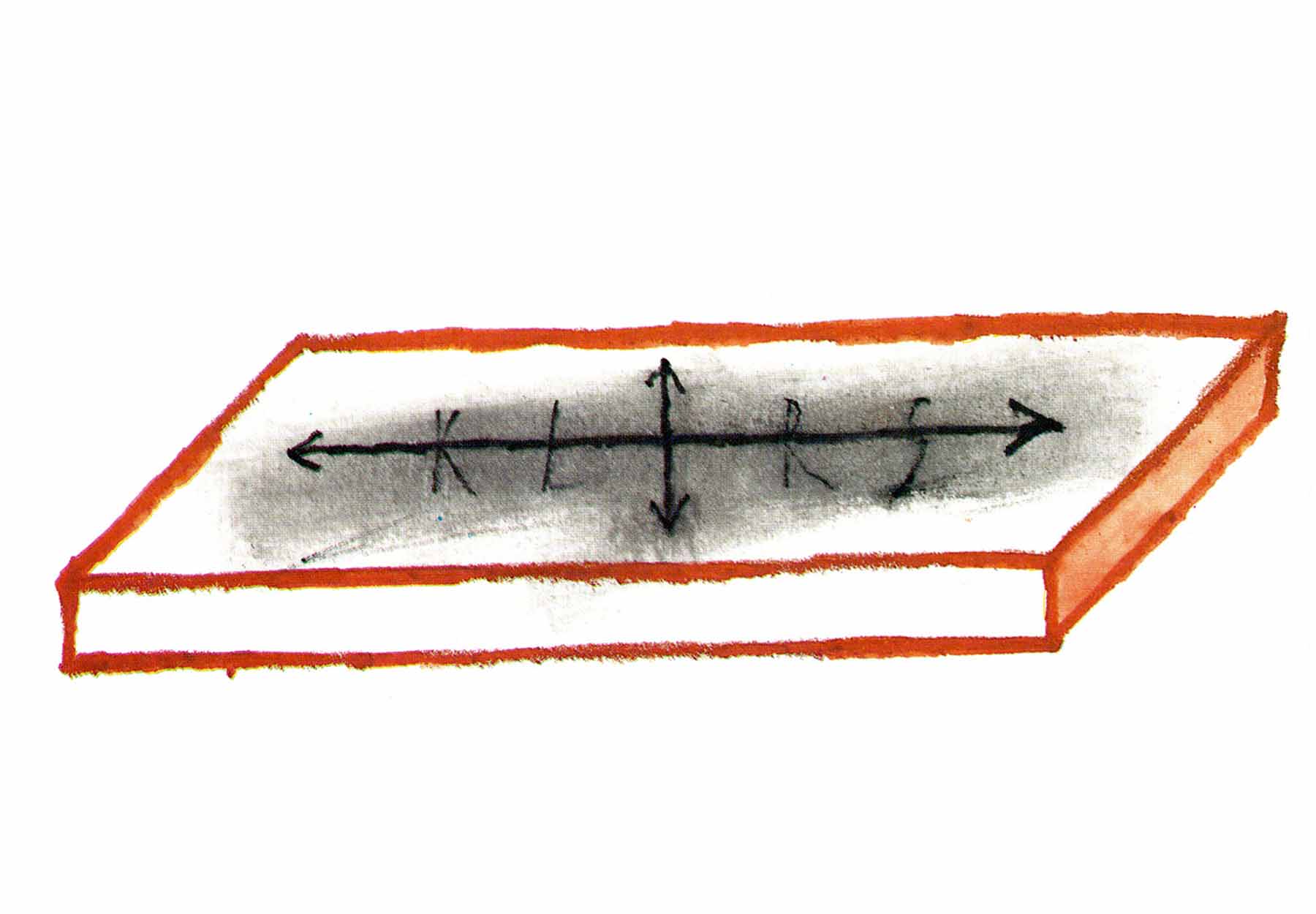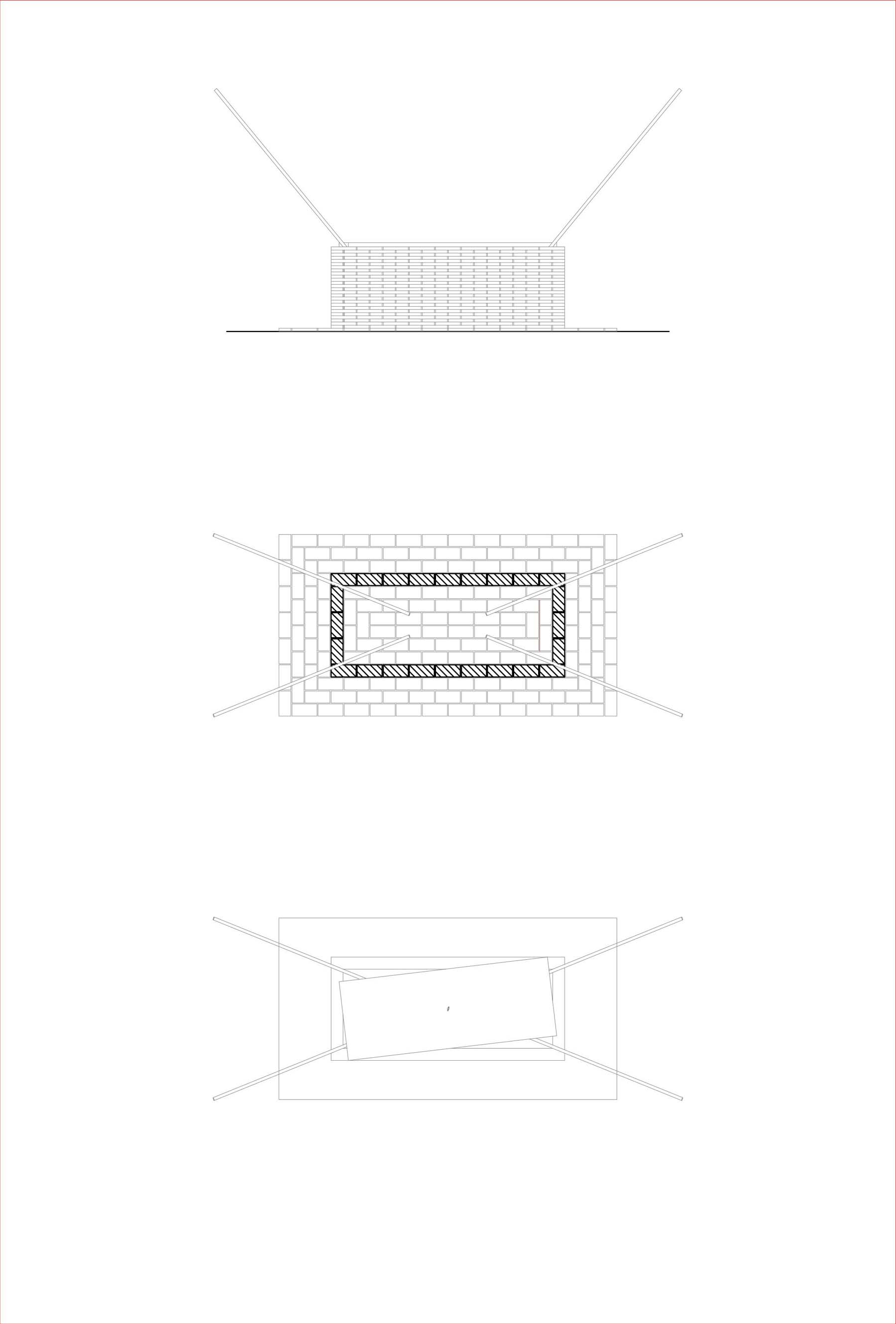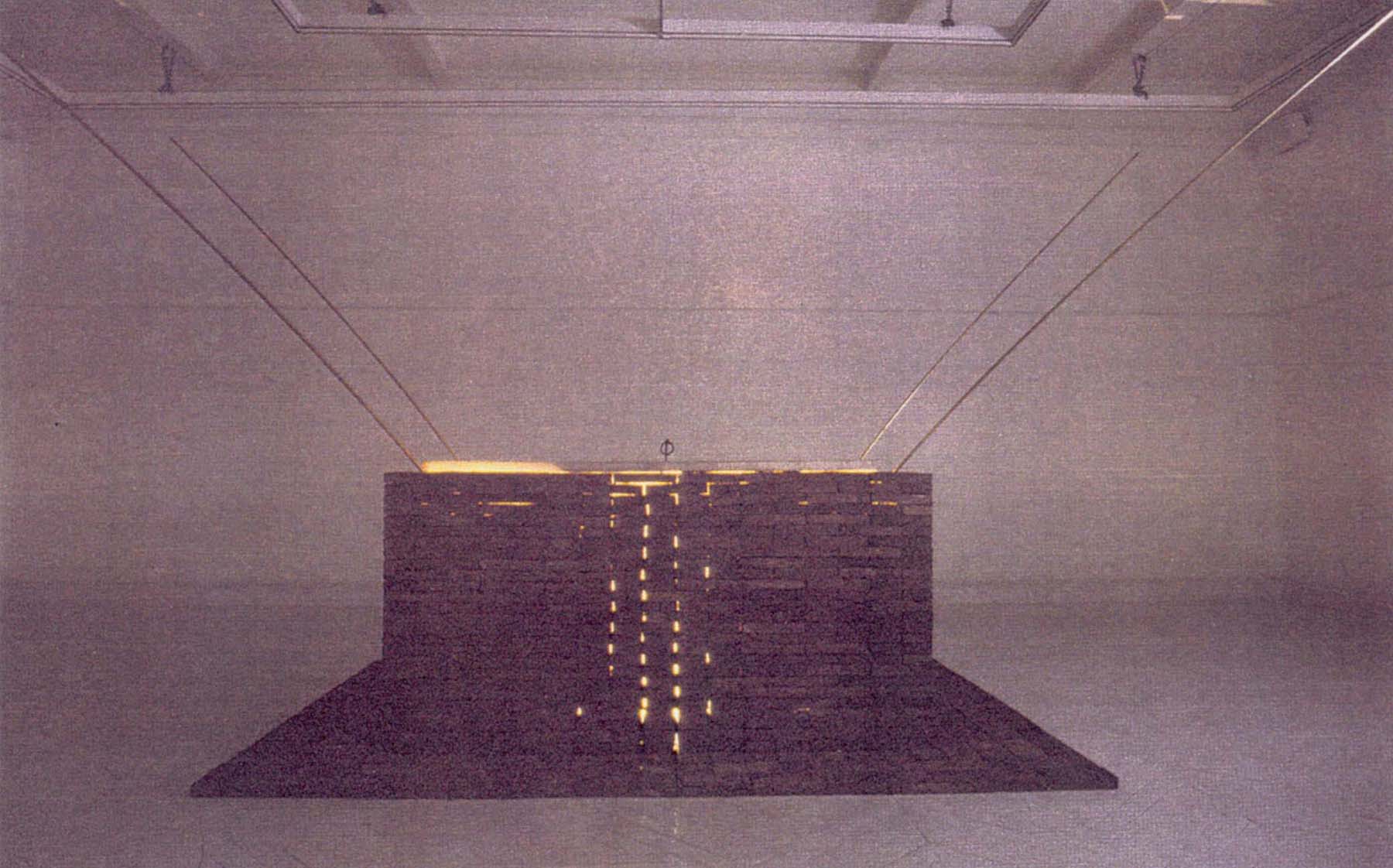
Mobiliario urbano
José Ramón Sierra
13/02/87. (Sala 085)
Urban furniture. Resurrection Lamp (by Karl Liebknecht and Rosa Luxemburg) 1967. 250 x 450 x 180 cm. Installation of a single work, on the floor, in the center of the room.
José Ramón Sierra Delgado
A box of bricks (proletarian, perhaps recovered from demolitions) bone dry with vertical joints of 1 cm; wooden lid with metal ring, slightly rotated that leaves uncovered four small triangles in the corners, through which four long brass rods come out. The inner light emanating from the incorrupt bodies escapes through the joints and the triangles.
The Dominican monk Guido di Pietro (later Fra Angelico) had arranged in his Last Judgment, 1425, a central street paved with an orderly succession of square mouths of tombs in two rows of staggered rows, with their lids open, from which has already emerged, resurrected by the trumpeting angels, all humanity, divided into two irreconcilable groups: to the left of the viewer, the righteous, to his right, the damned. In the middle, in the second row, a solitary tomb emerges, cubic and proportioned like this one. Shortly after, from 1481, Sandro Botticelli drew for Canto X of the book of the Inferno of the Dantian Comedy, the city of the damned with tombs to scale of the bodies (as here) and lids (with rings) moved by the force of fire. From these and similar flashes, cubic reveries are consolidated as primordial figurations of death. The cubic figure as evocative of memory and the heroic celebration of remembrance and gratitude, over the modern idea of function in the configuration of art and architecture, which, according to Loos, can only reach the funerary monument. The cubic tomb of Adolf Loos, also solitary and without human proportion, neither lid nor ring, was a construction by Kulka in 1958, according to a very schematic sketch by Loos in 1931, two years before his death. It is a solid block of granite measuring 1.16 x 1.16 x 0.90 m on a plinth measuring 1.90 x 1.90 x 0.37 m. Cubic figure without inside, not a cube. There is another sketch by Loos for his tomb, with an ostentatious banker’s bust. On the programmatic use of the interior and its design instruments, there is a long tradition of art – architecture, of which a favorite example would be the 1931 reform of the Neue Wache in Berlin (Sachs and Schinkel, 1836) by Tessenow. Also Chillida’s unrealized proposal for Tindaya in 1994. Unveilings of a large cubic and empty stomach, alien and contradictory to its recognizable external identity, shapeless, like a large tanned lying belly, wounded by a light that pierces it. Light plus rain plus Berlin snow in memory of the pantheonic hole of the 9 Roman meters. As Schulze and Windhorst quote, Fuchs presented Mies with drawings of an elaborate neoclassical monument that would include medallions with the faces of Liebknecht and Luxemburg sculpted by Rodin. “”When I saw them, I started to laugh,” Mies recounts, “and I told Fuchs that that would be fine for a banker’s monument.” Fuchs was not amused, but phoned Mies the next day asking what he would propose. Mies told him, “I have no idea, but since most of these people were shot in front of a wall, a brick wall would be what I would build.”” Neither Luxemburg nor Liebknecht was shot in front of a wall. According to Mumford, “the idea of a modern memorial is a real contradiction in terms.” (The Culture of Cities).

